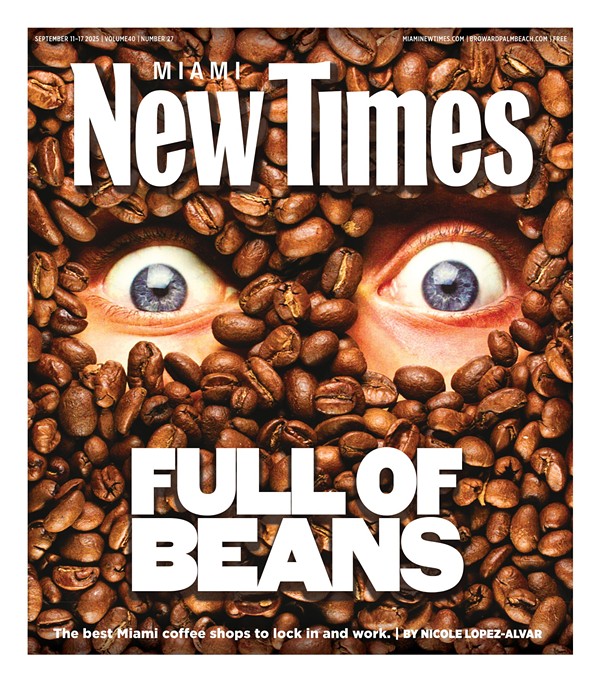And those SUVs are also dragging us further and further away, bringing us to the dramatic problem of urban sprawl in South Florida. The term mega-suburb refers to the shapeless, never-ending familiar fringe of housing developments, big office buildings, highways, and ugly malls mushrooming beyond incorporated suburbia.
And in exchange for this awful terrain? From 1982 to 1992 we've lost vital farmland to sprawl at a rate of roughly 400,000 acres per year. That's 45.7 acres per hour, every day, of "prime" farmland with the best soils and climates for growing crops.
Urban sprawl affects the quality of our drinking water. Natural landscapes such as forests, wetlands, and grasslands are permeable. They trap rainwater and snowmelt and filter it into the ground slowly. Since "megaburbia" is characterized by huge paved surfaces resistant to rain -- think of freeways, roads, driveways, parking lots, rooftops, and sidewalks -- they make up about 70 percent of the total impermeable surfaces in a watershed. Instead of slowly seeping into the ground, storm water becomes trapped above these surfaces, running off instead into lakes, streams, rivers.
But beyond physical health, the loss of such areas is an aesthetic disaster as well. It gives us a sense of place as opposed to some abstract notion of acreage. And indeed we value natural beauty. In his book The Evaluative Image of the City, Jack L. Nasar reminds us that people actually prefer environments that are pleasant, arousing, exciting, and relaxing. These places generally include open greenery, profuse vegetation, historic sites, and landscaping. Guess what? We dislike chaotic environments, dilapidation, shoddy construction, and congestion, places seemingly filled not with anything "pleasant" but with an excess of poles and wires and concrete. Though sprawl is not the only cause of environmental degradation, its brutal intrusion into our natural spaces is an important factor.
And it also literally costs us. There is reason to believe that higher taxes are related to the cost of new infrastructure being built in the ever-expanding suburbs. In fact the fiscal strain imposed by growth may only get worse, due to the high costs of operation and maintenance. We've spent decades constructing a gigantic network of roads, sewers, schools, power lines, et cetera to accommodate growth, and without anticipating the future cost when that network needs to be repaired.
Why, then, are we making our world so unpleasant as opposed to pleasant?
Because of that dream planted into our minds in the Twentieth Century about what "modern" comfortable living should be. People leave the city thinking they will part with all its evils: the noise, the crime, the pollution. But the dreamhouse is not so peaceful anymore, becoming instead a center for that very noise, congestion, and ugliness we tried so hard to leave behind.
And what does all this have to do with art?
For some time now, Miami's best artists have been dealing with problems in our living environment. Though not a movement per se (nor have they an explicit agenda), these artists have a better perception than most of our policies. They see the dislocated -- physical and spiritual -- facets of our lives, within and outside the city, and bring them together in a variety of themes and mediums. It's all there: the political, economic, social, and aesthetic issues that affect us every day. Here is a quick glimpse of some of that topical work; sorry if I forget some.
I'm thinking of Rosario Marquardt and Roberto Behar's city landmarks, attempts to beautify public space, most noticeably in the Design District; the way Tall Rickards and Adler Guerrier document nomadic habits at night; the language behavior in Tao Rey's ornamental graffiti; Carlos de Villasante's murals; the building materials and textures that make up the works of Robert Chambers, Martin Oppel, and Charo Oquet; the fascination with mock walls, manquettes, and structures in the assemblies of David Prusko, Juan Lezcano, David Rohn, and Cooper.
There is obvious cultural and political subversion in William Cordova's videos, Odalys Valdivieso's extensive heaps of junk, and George Sanchez's clashing architecture models; artists like Cesar Trasobares and Leyden Rodriguez-Casanova investigate aspects of life within the Cuban-exile community. City traffic and its political impact are probed in Tom Scicluna and Daniel Arsham's sculptures, as well as Gavin Perry's glossy and pristine surfaces.
We have seen William Keddell's 3-D vistas of poverty-stricken Allapattah; images of power and control emerging in Glexis Novoa's post-Cold War city juxtapositions; while Gustavo Acosta's anomic landscapes help reveal our alienated selves. Elizabeth Withstandley, Kyle Trowbridge, and Westen Charles have zoomed in on the trivial horrors behind the walls of middle-class suburbia.
Our city is ever present even when it's not there, as in Wendy Wischer's projections against buildings, walls, and floors; in the abstract ecological gestures of Naomi Fisher and Bhakti Baxter. Finally we've watched a grassroots movement of inner-city interventions carried out by different art associations: Green Door, Diaspora Vibe, Locust Projects, Lab6, PS 742, Antoni Miralda and Montse Guillen's food museum at Transeat, and the House come to mind.
Then there have been the "happenings," such as Fred Snitzer's "Departing Perspectives" predemolition exhibit at the old Espirito Santo building; Eugenia Vargas's temporary house shows, and Gretel Garcia and Rick Ariza's Motel Show, all of which are keeping us actively interacting in this urban canvas. What's all this leading to? If art is anything manmade, Miami's artists are redefining the living environment not only as an aesthetic model. More important they are "doing" something to it. Bit by bit, by reflecting and participating, they are slowly transforming the city, our realm of existence, with all its good and evil.












